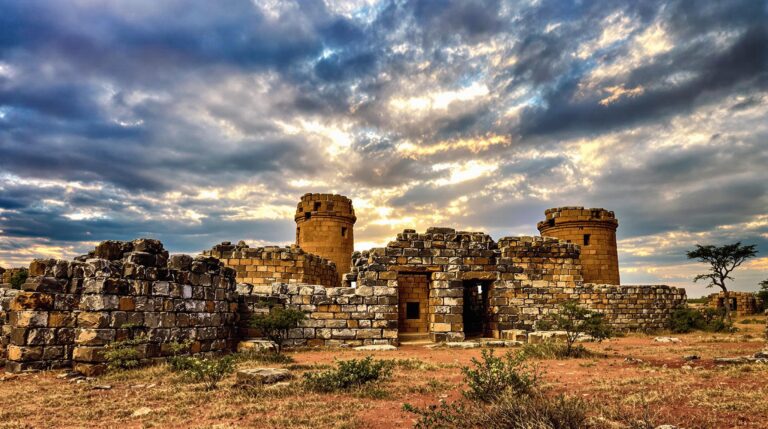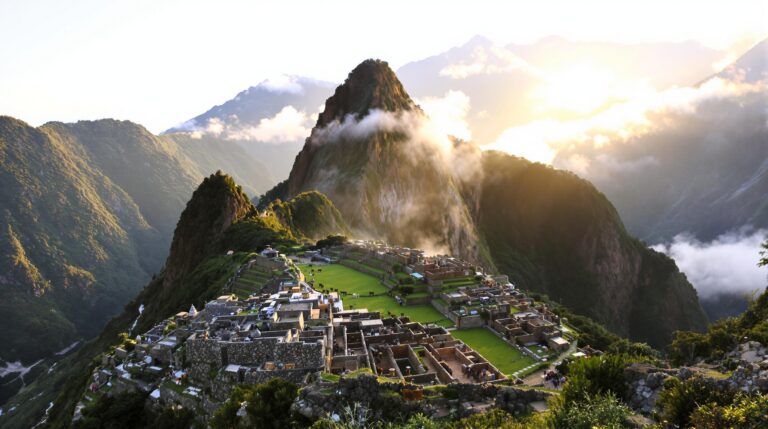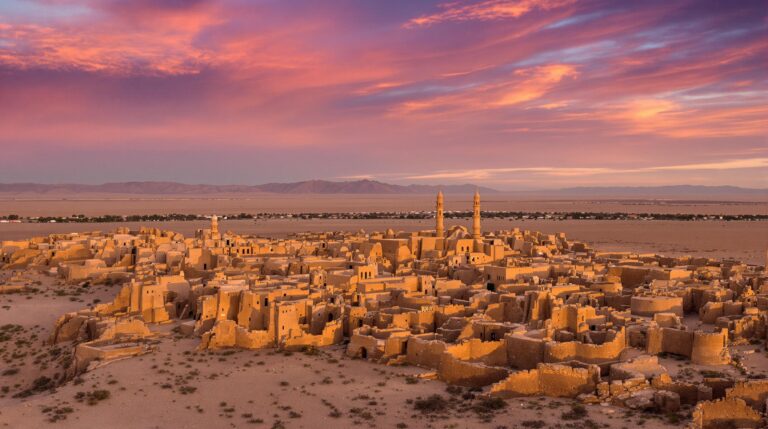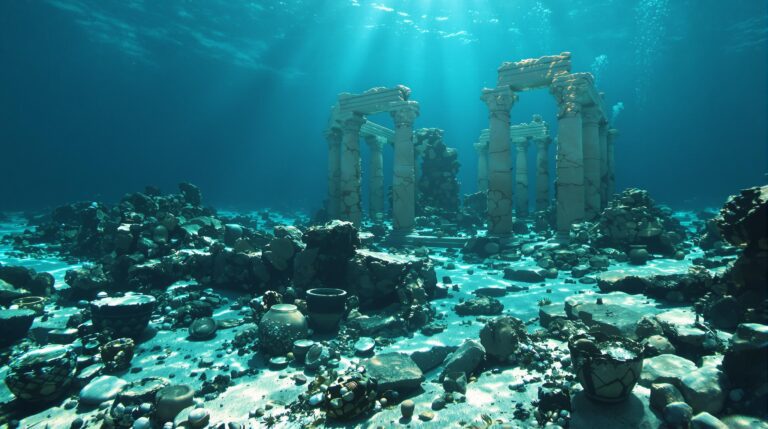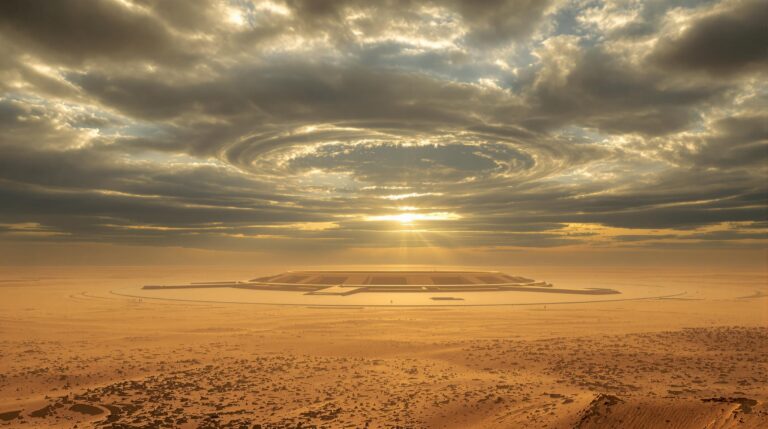The Hidden City of the Monkey God
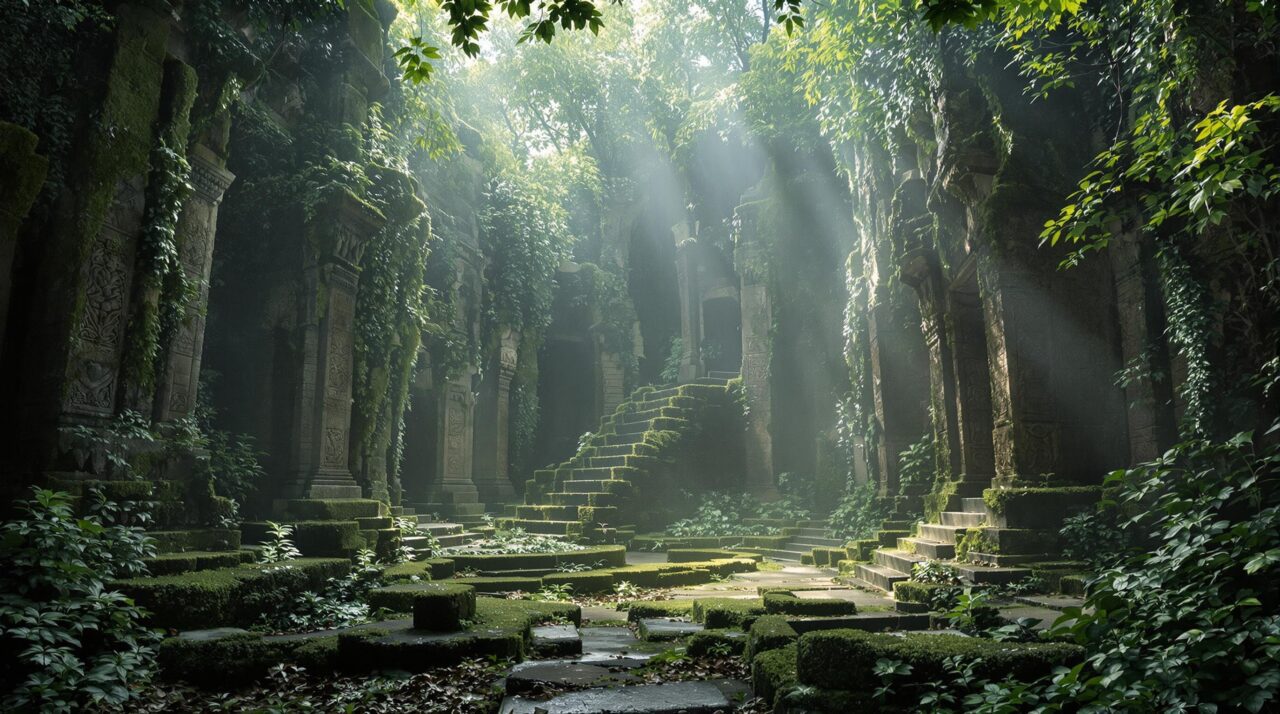
The Hidden City of the Monkey God lies shrouded in mystery, its origins steeped in ancient myths.
Recent advancements in technology have revealed its stone structures, hinting at a once-thriving civilization.
Scholars remain divided on its significance, while local communities experience a revival of cultural pride.
As the debate continues, questions arise about what this site truly represents. What secrets might it still hold, waiting to be discovered?
TL;DR
Hide- The Hidden City of the Monkey God is linked to rich indigenous myths, where monkeys are seen as ancestors of humanity.
- Modern expeditions utilized technologies like LiDAR to uncover extensive urban structures and challenge historical narratives about the civilization.
- Archaeological discoveries reveal advanced construction techniques and evidence of ritual ceremonies, highlighting the culture's architectural and spiritual significance.
- The site's discovery has revitalized tourism, empowering local communities and fostering cultural pride and heritage appreciation.
- Preservation efforts face challenges due to environmental threats and scholarly debates about the authenticity of findings related to the city.
Origins and Ancient Legends Surrounding The Lost City of the Monkey
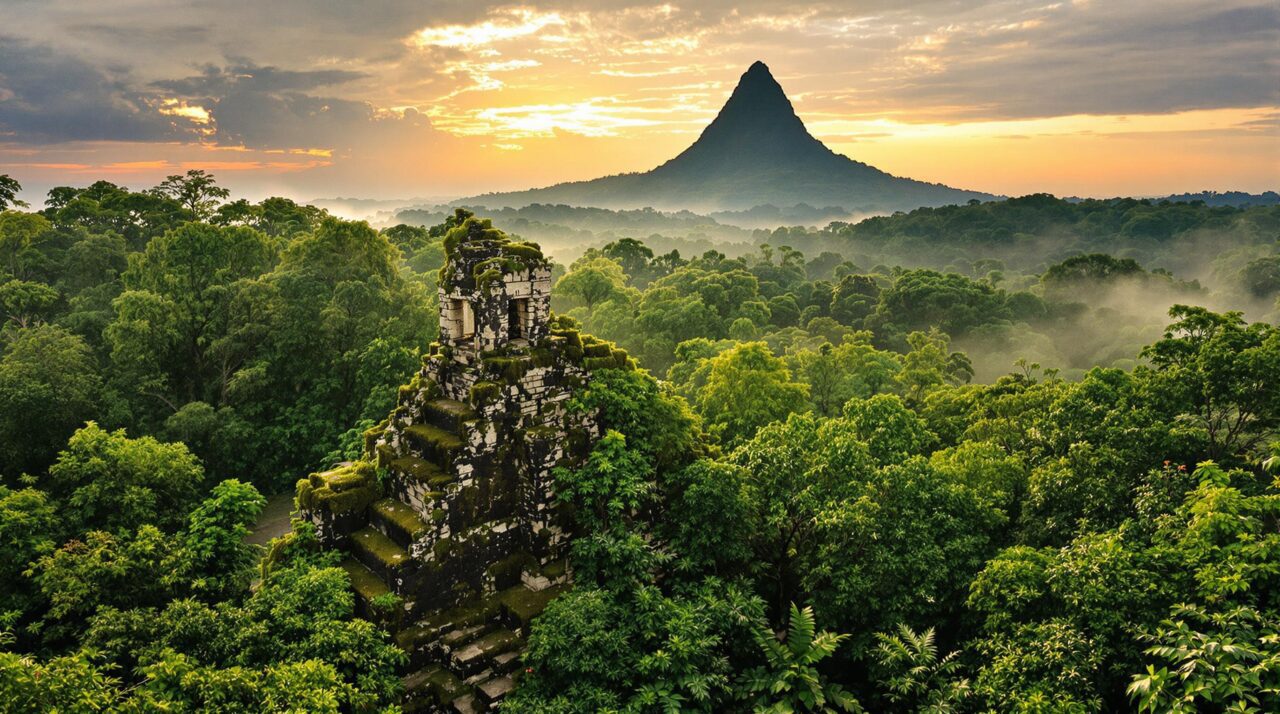
The lore surrounding the Lost City of the Monkey God is steeped in rich indigenous myths and oral traditions that speak of a civilization shrouded in mystery.
Medieval accounts and tales from early explorers further tantalize the imagination, suggesting that this enigmatic city may have once thrived amidst the dense jungles of Central America.
Together, these narratives weave a complex tapestry of history and legend, inviting both skepticism and wonder about what truths lie beneath the forest’s canopy.
Indigenous Myths and Oral Traditions
In the intricate mosaic of local lore, tales of a divine monkey deity have woven themselves into the cultural fabric of the region surrounding the Lost City of the Monkey God.
These narratives, steeped in ritual and symbolism, serve not only as historical anchors but also as reflections of the deep reverence the indigenous people hold for their ancestral heritage.
Passed down through generations, these stories illuminate the profound connection between the people and their elusive, legendary past.
Stories of a Divine Monkey Deity in Local Lore
How did a divine monkey deity become entwined in the cultural fabric of Central America’s indigenous peoples?
Revered as a symbol of freedom and wisdom, tales of this deity encompass:
- Creation myths, portraying the monkey as a progenitor of humanity.
- Legends of transformation, where humans seek guidance and insight.
- Tales of guardianship, protecting sacred sites from malevolent forces.
These stories echo through generations, shaping identities and beliefs.
Rituals and Symbolism Passed Through Generations
While many cultures have woven their myths into daily practices, the indigenous peoples of Central America have uniquely integrated the lore of the Monkey God into their rituals and symbolism, creating a lively mosaic of beliefs that transcend time.
This connection manifests in sacred dances, intricate carvings, and communal ceremonies, where ancestral stories breathe life into the present, echoing a deep reverence for nature and the cosmos.
Medieval Accounts and Early Explorer Tales
Medieval accounts and early explorer tales weave a vibrant fabric of the lost City of the Monkey God, revealing a blend of myth and reality.
Ancient maps and chronicles hint at a civilization shrouded in mystery, while the recordings of traveling scribes illuminate the fervent imagination of those who sought its treasures.
These narratives not only reflect the allure of adventure but also serve as a proof of humanity’s enduring quest for the unknown.
References in Ancient Maps and Chronicles
Ancient maps and chronicles serve as tantalizing gateways to the past, revealing the enigmatic allure of the Lost City of the Monkey God.
Key references include:
- Cartographic symbols hinting at mythical cities.
- Descriptions of unexplored territories teeming with treasures.
- Accounts of indigenous tales passed down through generations.
These artifacts intertwine history and legend, guiding modern explorers toward the elusive city shrouded in mystery.
Legends Recorded by Traveling Scribes
Traveling scribes throughout history have chronicled tales that blur the lines between fact and fiction, weaving narratives around the fabled Lost City of the Monkey God.
Medieval accounts brimmed with fantastical descriptions, portraying a city of gold and ancient deities.
Early explorers, captivated by these legends, sought to reveal a domain shrouded in mystery, their quests fueled by the promise of untold treasures and profound truths.
Modern Expeditions and Rediscoveries
As explorers ventured into the impenetrable jungles of Honduras, their first encounters with the rumored city were marked by both awe and skepticism.
The integration of advanced technologies, such as LiDAR scanning, revealed hidden structures long obscured by dense foliage, igniting a renewed interest in this lost civilization.
These modern expeditions not only challenge historical narratives but also raise questions about the interplay of technology and archaeology in uncovering humanity’s past.
First Encounters in the Dense Jungle
In the heart of the dense jungle, whispers of a lost civilization echoed through the trees, captured in anecdotal reports from local inhabitants who spoke of ancient ruins and hidden treasures.
Early exploratory expeditions ventured into this uncharted territory, revealing tantalizing initial finds that hinted at a once-thriving society.
These encounters, steeped in mystery, set the stage for a modern quest to unearth the secrets of the fabled city of the Monkey God.
Anecdotal Reports from Local Inhabitants
While the dense jungles of Honduras concealed their secrets for centuries, the whispers of local inhabitants provided tantalizing glimpses into the existence of a lost civilization.
These accounts often included:
- Strange stone carvings depicting unknown deities.
- Legends of a city filled with gold and prosperity.
- Mysterious sounds echoing through the trees, attributed to ancient spirits.
Such narratives fueled intrigue and exploration, beckoning adventurers into the unknown.
Early Exploratory Expeditions and Initial Finds
Driven by the tantalizing tales of local inhabitants, early explorers ventured into the uncharted jungles of Honduras, seeking the fabled City of the Monkey God.
Their expeditions revealed remnants of ancient civilization, shrouded in dense foliage. Each discovery, a whisper of history, sparked curiosity and intrigue, while the challenges of the treacherous terrain echoed the eternal quest for knowledge hidden within nature’s embrace.
Technological Advances in Archaeology
In the quest to reveal the secrets of the Hidden City of the Monkey God, modern archaeology has harnessed the power of satellite imagery and LiDAR mapping, revolutionizing how ancient sites are discovered and analyzed.
These cutting-edge technologies have disclosed previously obscured stone structures and artifacts, reshaping the narrative of a civilization long thought lost to time.
As excavations continue, the interplay between technology and exploration promises to illuminate the intricate fabric of history buried within the dense jungle.
Satellite Imagery and LiDAR Mapping Discoveries
As technological advancements continue to reshape the landscape of archaeology, the application of satellite imagery and LiDAR mapping has revealed remarkable insights into the Hidden City of the Monkey God.
Key discoveries include:
- Extensive urban planning previously hidden beneath dense foliage.
- Identification of potential ceremonial sites.
- Insights into ancient agricultural practices.
These revelations invite a deeper understanding of a civilization shrouded in mystery and allure.
Recent Digs Uncovering Stone Structures and Artifacts
Recent excavations in the Hidden City of the Monkey God have unearthed a wealth of stone structures and artifacts that illuminate the architectural sophistication of this long-lost civilization.
Intricate carvings and towering edifices reveal a culture deeply connected to its environment.
These discoveries not only enrich historical narratives but also invite a reevaluation of ancient societies’ complexities and their enduring legacies in a modern context.
Architectural Marvels and Cultural Insights
The architectural wonders of the Hidden City of the Monkey God reveal a civilization steeped in sophistication and artistry.
Intricate stone constructions and elaborate carvings not only demonstrate advanced engineering skills but also offer a glimpse into the daily life and societal organization of its inhabitants.
Each artifact and structure serves as a testament to the cultural richness that once thrived in this mysterious jungle enclave.
Intricate Stone Constructions and Carvings
The intricate stone constructions of the Hidden City of the Monkey God reveal not only the architectural prowess of its lost civilization but also the cultural significance embedded within their designs.
Evidence of ritual ceremonies and sacred spaces suggests a society deeply intertwined with spiritual beliefs, where every carving and structure served a purpose beyond mere aesthetics.
These monumental creations stand as a symbol of the advanced construction techniques and the complex societal structures that once thrived in this enigmatic landscape.
Evidence of Ritual Ceremonies and Sacred Spaces
While exploring the remnants of the hidden city of the Monkey God, researchers uncover a wealth of evidence indicating the presence of complex ritual ceremonies and sacred spaces.
Key findings include:
- Elaborate stone altars adorned with intricate carvings.
- Uniquely positioned platforms suggesting astronomical alignments.
- Depictions of deities and sacred animals, hinting at a rich spiritual life.
These elements reveal a profound cultural legacy.
Construction Techniques Reflecting Lost Civilizations
Although shrouded in mystery, the construction techniques observed within the hidden city of the Monkey God reveal a remarkable sophistication that speaks to the ingenuity of its creators.
Intricate stone carvings, precise masonry, and advanced engineering showcase a profound understanding of materials and aesthetics.
These architectural marvels not only reflect a lost civilization’s cultural identity but also invite contemplation of their enduring legacy amidst the jungle’s embrace.
Daily Life and Societal Organization
The artifacts unearthed from the Hidden City of the Monkey God provide a fascinating glimpse into the daily lives of its inhabitants, revealing intricate networks of trade, religious practices, and governance structures.
Each item tells a story, reflecting the cultural identity and aspirations of a society long vanished yet rich in legacy.
Understanding these remnants offers profound insights into how architectural marvels served not only as physical structures but also as symbols of communal values and social organization.
Artifacts Revealing Trade, Religion, and Governance
As explorers unearthed the remnants of the hidden city of the Monkey God, they disclosed a trove of artifacts that illuminate the complex interplay of trade, religion, and governance within this ancient civilization.
Key findings include:
- Intricate pottery indicating trade networks.
- Ritualistic objects highlighting spiritual practices.
- Governance symbols suggesting hierarchical structures.
These artifacts collectively reveal a detailed fabric of daily life and societal organization.
Interpretations of Cultural Identity and Legacy
Cultural identity emerges as a profound theme within the architectural marvels of the hidden city of the Monkey God, where every stone and structure whispers tales of its inhabitants’ values and aspirations.
These edifices reveal complex societal organization, reflecting a synthesis of daily life and spiritual beliefs. Their design encapsulates a legacy of resilience, inviting contemplation on how cultural narratives shape human experience across time.
Debates, Mysteries, and Future Research
The discovery of the Hidden City of the Monkey God has sparked intense scholarly debates surrounding its authenticity and the implications for Mayan history.
As preservation efforts face challenges from environmental threats and human activity, questions arise about the balance between safeguarding these ancient ruins and advancing ongoing exploration.
Future research promises to unravel these mysteries, yet it also risks igniting further controversies within the academic community.
Scholarly Controversies on Authenticity
The existence of the fabled city associated with the Monkey God has ignited a fierce debate among scholars, pitting enthusiasts of ancient civilizations against skeptics armed with alternative narratives.
Proponents cite archaeological findings and historical texts that suggest a once-thriving metropolis, while dissenters question the validity of such claims, attributing them to misinterpretations and sensationalism.
As the quest for authenticity continues, the mystery surrounding this elusive site invites further inquiry and challenges the boundaries of historical understanding.
Arguments Supporting the City’s Existence
While many scholars remain skeptical about the existence of the fabled City of the Monkey God, a growing body of evidence and research fuels ongoing debates that challenge this skepticism.
Key arguments supporting its existence include:
- Advanced technology revealing previously hidden structures.
- Historical accounts correlating with archaeological findings.
- Indigenous lore suggesting a once-thriving civilization.
These elements compel further exploration into the city’s elusive reality.
Skeptical Views and Alternative Explanations
Despite the mounting evidence presented by proponents of the City of the Monkey God, a significant contingent of scholars remains unconvinced, casting doubt on both the authenticity of the claims and the interpretations of the data.
Critics argue that the findings may be misinterpreted or overstated, urging caution and advocating for rigorous methodologies in future research to unravel the city’s enigmatic legacy.
Preservation Efforts and Ongoing Exploration
The preservation of the Hidden City of the Monkey God faces formidable challenges, particularly due to its location in a tropical climate that accelerates decay.
Collaborative efforts with international researchers are essential as they seek innovative solutions to safeguard the site while unraveling its mysteries.
As debates continue over the best approaches to conservation, the interplay between preservation and exploration remains a tantalizing focal point for future inquiry.
Conservation Challenges in a Tropical Climate
As researchers explore the enigmatic depths of the tropical landscape surrounding the Hidden City of the Monkey God, they confront a myriad of conservation challenges that intertwine ecological preservation with the stark realities of human influence.
Key issues include:
- Deforestation driven by agriculture and logging.
- Biodiversity loss due to invasive species.
- Climate change impacts on fragile ecosystems.
These factors complicate preservation efforts in this unique environment.
Collaborative Projects with International Researchers
While the mysteries of the Hidden City of the Monkey God continue to captivate explorers and researchers alike, collaborative projects with international teams have emerged as an essential component in unraveling its secrets.
These partnerships foster a dynamic exchange of ideas and methodologies, driving innovative preservation efforts and igniting ongoing explorations that challenge conventional understanding.
Ultimately, this collaborative approach paves the way for future discoveries and greater cultural appreciation.
The Enduring Legacy and Impact on Modern Culture
The discovery of the Hidden City of the Monkey God has left an indelible mark on local communities, revitalizing tourism and sparking economic opportunities in the region.
This ancient site has also ignited the imagination of artists and filmmakers, inspiring a wave of creative works that reflect its mystique and allure.
As modern culture increasingly seeks connections to the past, the legacy of this enigmatic place continues to shape narratives across various mediums.
Influence on Local Communities and Tourism
The discovery of the Hidden City of the Monkey God has sparked a renaissance of indigenous narratives, fostering a renewed sense of cultural pride among local communities.
As interest in heritage tourism surges, economic opportunities are emerging, allowing residents to benefit from their rich history while preserving their traditions.
This intersection of past and present not only enriches local identity but also transforms the region into a lively cultural hub.
Revival of Indigenous Narratives and Cultural Pride
As the world increasingly recognizes the importance of indigenous narratives, a profound revival is sweeping through local communities, reawakening cultural pride and reshaping identities.
This resurgence is characterized by:
- The restoration of traditional practices and languages.
- The celebration of ancestral stories that inspire unity.
- The emergence of artistic expressions that challenge modern perceptions.
These elements forge a powerful connection to heritage, enriching contemporary culture.
Economic Benefits Through Heritage Tourism
While many modern societies often overlook the intricate fabric of indigenous cultures, heritage tourism has emerged as a pivotal avenue for revitalizing both economic growth and cultural appreciation within local communities.
This dynamic sector not only generates financial opportunities but also fosters a profound connection with ancestral traditions, empowering locals to share their rich narratives while preserving their historical identity amid global influences.
Inspiration in Arts and Media
The Hidden City of the Monkey God has captured the imagination of artists and storytellers across various mediums, becoming a rich source of inspiration for films, literature, and documentaries.
This enigmatic locale embodies an enduring symbol of mystery, inviting exploration of themes such as adventure, discovery, and the unknown.
As its legend continues to unfold, the city resonates in modern culture, reflecting humanity’s relentless quest for understanding hidden truths.
Depictions in Films, Books, and Documentaries
Legends surrounding the Hidden City of the Monkey God have captivated storytellers, filmmakers, and historians alike, weaving a complex tapestry of intrigue and adventure that transcends mere exploration.
Notable depictions include:
- Documentaries revealing the mysteries of the jungle.
- Novels exploring themes of lost civilizations and human ambition.
- Films that dramatize the quest for discovery and the allure of the unknown.
The City as an Everlasting Symbol of Mystery
Enthralling the imagination for centuries, the Hidden City of the Monkey God stands as a vivid emblem of enigma within modern culture.
Its allure permeates literature, film, and art, inspiring creators to explore themes of adventure, discovery, and the unknown.
This city, shrouded in legend, continues to captivate hearts and minds, symbolizing the eternal quest for knowledge and the mysteries that lie ahead.
Wrapping Up
The Hidden City of the Monkey God continues to enchant and perplex, revealing that over 60% of its structures remain undiscovered, hinting at vast untold stories beneath the jungle canopy.
This statistic underscores the potential for further exploration and understanding of a civilization that once thrived, inviting both academic inquiry and cultural appreciation.
As researchers explore deeper, the site stands as a proof of the enduring legacy of indigenous narratives, reshaping contemporary perspectives on history and heritage.

